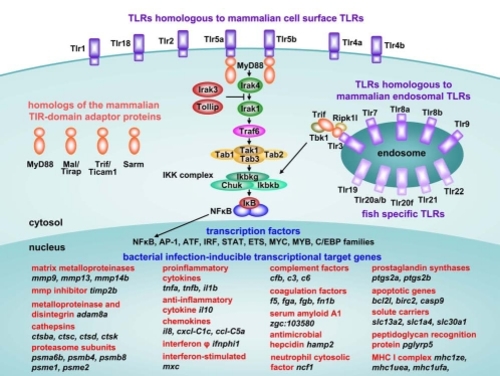- Title
-
Host-Pathogen Interactions Made Transparent with the Zebrafish Model
- Authors
- Meijer, A.H., and Spaink, H.P.
- Source
- Full text @ Curr. Drug Targets
|
Schematic overview of the development of the zebrafish immune system. Commonly used sites for systemic bacterial infection of embryos by microinjection are the blood island and the yolk sac circulation valley at 1-3 dpf. |
|
Components of the TLR pathway and genes commonly induced during the innate immune response of zebrafish to bacterial infection. Annotation of the zebrafish TLRs is based on Meijer |
|
|



